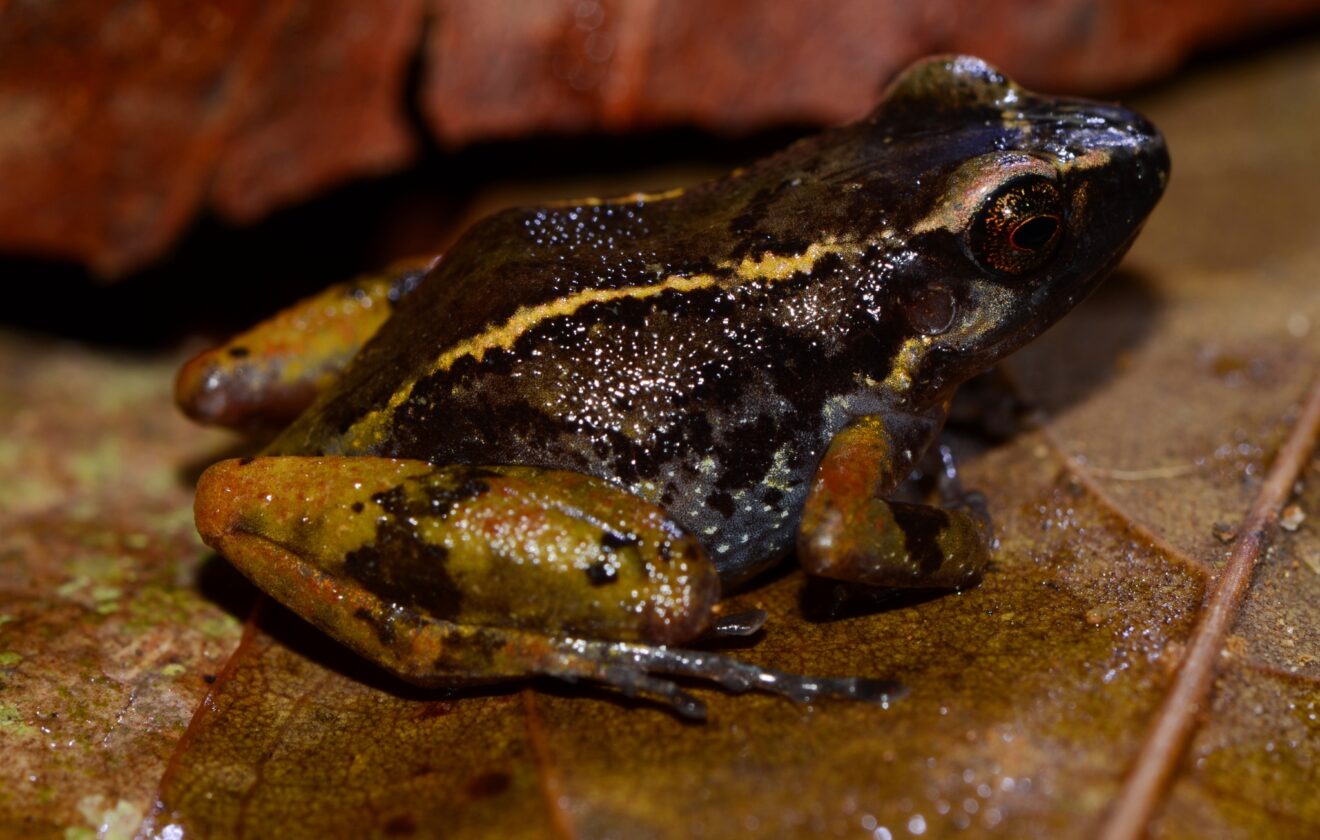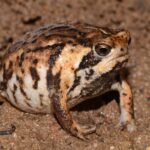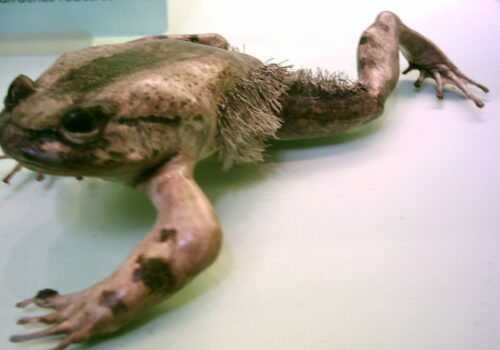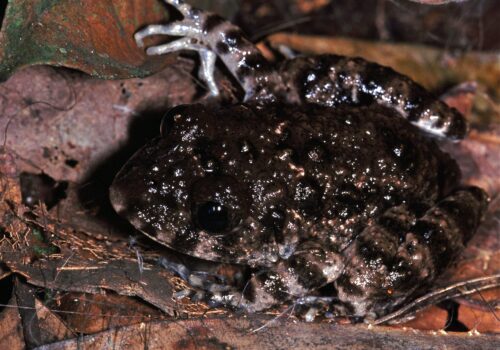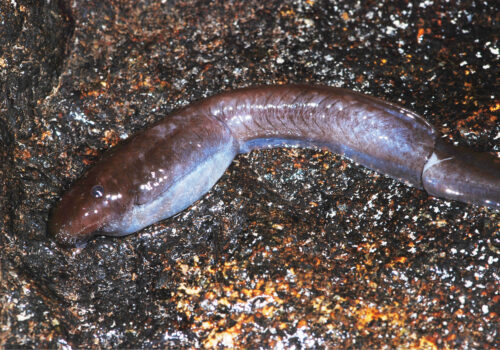- The Whistling Wonders of the Forest Floor: Discovering Arthroleptis taeniatus, the Striped Squeaker Frog
- Taxonomy and Classification
- Natural Habitat: Life Beneath the Leaf Litter
- Physical Characteristics: Painted in Nature's Brush
- Behavior and Life Cycle: Quiet Lives of Intrigue
- Ecological Role: Tiny Amphibians with Big Impact
- Threats and Conservation Status: Guarding Tiny Treasures
- Cultural and Scientific Significance: Frogs Beyond Nature
- Conclusion: Embracing the Call for Conservation
The Whistling Wonders of the Forest Floor: Discovering Arthroleptis taeniatus, the Striped Squeaker Frog#
In the lush, verdant undergrowth of Africa’s coastal forests, hidden beneath leaf litter and dense vegetation, thrives a remarkable yet inconspicuous frog species known as Arthroleptis taeniatus—more commonly, the Striped Squeaker Frog. Barely larger than your thumb, this tiny amphibian draws curious naturalists and biologists alike, partly because of its striking patterns and partly due to its intriguingly elusive habits.
Unlike many frogs that spend part of their lives in water, Arthroleptis taeniatus exists wholly on land. It is a specialist inhabitant of humid forests, silently hopping through leaf litter, blending seamlessly amidst the mosaic of browns and greens. But what truly captivates researchers and wildlife enthusiasts alike is its peculiar habit—emitting distinctive squeaking calls. It’s these hauntingly beautiful vocalizations, akin to melodic whistles on a quiet forest evening, that have earned it the charming nickname “Squeaker Frog.”
Taxonomy and Classification#
Arthroleptis taeniatus is firmly situated within the Arthroleptidae family, belonging to the diverse and intriguing frog genus Arthroleptis. To fully appreciate this species, we must explore its broader lineage.
Family: Arthroleptidae – Squeakers and their Kin#
The Arthroleptidae family encompasses numerous species collectively known as “Squeakers” due to their distinctive vocalizations. This family includes frogs adapted almost entirely for terrestrial life, often found in damp tropical and subtropical regions. Arthroleptidae members frequently feature elongated digits adapted perfectly for navigating leaf litter and moist earthy habitats, characteristics exemplified wonderfully in Arthroleptis taeniatus.
Genus: Arthroleptis – Masters of Terrestrial Adaptation#
The Arthroleptis genus is remarkably diverse, housing species specialized to humid forest habitats across sub-Saharan Africa. What unites these frogs biologically is the absence of a free-swimming tadpole stage. Species like Arthroleptis taeniatus undergo direct developmental cycles, wherein eggs laid in leaf litter hatch directly into miniature adult-like froglets, bypassing the aquatic tadpole phase entirely. This adaptation confers significant evolutionary advantages, allowing the frogs independence from standing water bodies in forest environments.
Natural Habitat: Life Beneath the Leaf Litter#
Arthroleptis taeniatus is primarily distributed across the coastal forest belt stretching through Kenya, Tanzania, Mozambique, and Zimbabwe. Here, beneath the canopy’s dappled sunlight, vibrant ecosystems teem with life. Amidst decomposing plant material and rich soil, Arthroleptis taeniatus finds optimal shelter and sustenance.
These frogs prefer humid, shaded microhabitats densely packed with organic matter like leaf litter, fallen logs, moss-covered roots, and vegetation clusters. The consistently damp conditions are ideal for their delicate skin that quickly loses moisture if exposed. A subtle orchestra accompanies evenings in these forests—a tranquil symphony punctuated by the frog’s distinctive squeaks. The frogs are masters of camouflage and remain largely unnoticed until one accidentally disturbs their cover, prompting them to swiftly leap to another secluded refuge.
This intricate relationship between frog and habitat is finely tuned. Throughout rainy seasons, the moisture-rich environment sustains their population growth, enabling successful breeding and juvenile frog survival.
Physical Characteristics: Painted in Nature’s Brush#
Arthroleptis taeniatus is captivatingly subtle. Like an expert illusionist, it disappears into the environment using an intricate pattern of stripes and mottled pigmentation. Measuring just about 20 to 35 millimeters in length, adults fit comfortably within the palm of your hand.
Coloration and Camouflage#
The dorsal surface of this diminutive amphibian showcases shades of brown, tan, or reddish hues adorned with bold, darker stripes running longitudinally from head to hind. This striping serves a crucial ecological purpose—breaking up the frog’s outline, rendering it indistinguishable amongst forest floor detritus.
The belly, in contrast, reveals a softer palette of pale creams or greys, occasionally marked with delicate speckles. While subtle, these morphological variations between individuals aid biologists in identifying and studying the species across different locales.
Adaptations for Terrestrial Survival#
Its powerful, elongated hind limbs are tailored for agile leaping; minimal webbing on the digits underscores adaptations entirely for land rather than aquatic life. Meanwhile, highly sensitive skin, capable of absorbing moisture and breathing directly from humid forest air, shows evolutionary perfection for terrestrial conditions.
Behavior and Life Cycle: Quiet Lives of Intrigue#
Though small and often overlooked, Arthroleptis taeniatus engages in fascinating behavior, ranging from sophisticated hunting strategies to unique reproductive tactics.
Feeding Strategy: Ambush With Precision#
The Striped Squeaker is predominantly insectivorous, strategically hunting ants, termites, beetles, spiders, and other minuscule arthropods abundant on the forest floor. By remaining near-motionless in hidden ambush positions, the frog conserves energy, waiting patiently before lunging forward in quick strikes, its tongue swiftly seizing unwary prey.
Reproduction Without Tadpoles#
Perhaps one of the most significant ecological marvels of Arthroleptis taeniatus lies in their reproductive habits. Unlike relatives residing near pools or streams, this frog’s eggs nestle safely amidst moist leaf litter. The embryos develop directly within the eggs, bypassing the tadpole life stage altogether. Juveniles hatch fully formed, ready to immediately adapt to their terrestrial existence.
Mating occurs during humid evenings, triggered by heavy rains. Males issue calls—delicate squeaks and chirrups—to attract potential female partners. After successful courtship, females deposit small clutches of eggs discretely amongst the damp and shaded forest litter, entrusting the environment itself to nurture their offspring safely into adulthood.
Ecological Role: Tiny Amphibians with Big Impact#
Within the greater forest ecosystem, Arthroleptis taeniatus plays several vital ecological roles. Beyond being predators controlling insect populations, they themselves serve as prey to larger predators like snakes, birds, spiders, and small mammals, thus becoming integral links in intricate food webs.
Additionally, their sensitivity makes them valuable bioindicators. Changes directly impacting their habitat—such as pollution, deforestation, and climate fluctuations—can drastically affect frog populations, providing a warning sign of broader ecological concerns.
Threats and Conservation Status: Guarding Tiny Treasures#
The vulnerability of Arthroleptis taeniatus mirrors that of countless rainforest species, suffering heavily from deforestation and habitat fragmentation due to expanding agriculture, logging, human settlements, and climate change impacts. The continued shrinking of their habitats directly impacts this frog’s population density and reproduction.
According to the International Union for Conservation of Nature (IUCN), Arthroleptis taeniatus currently holds a status of “Least Concern.” However, regional declines suggest cautious vigilance is necessary to ensure this species remains thriving.
Conservationists actively advocate for forest protection, community education, and habitat restoration programs across East and Southern Africa. Participation in international amphibian conservation initiatives further highlights the importance of Arthroleptis taeniatus as key indicators of forest ecosystem health.
Cultural and Scientific Significance: Frogs Beyond Nature#
Several local communities across the species’ habitat range have traditionally regarded frogs like Arthroleptis taeniatus with respect, occasionally viewing them metaphorically in folk legends symbolizing renewal, adaptability, and humility. Scientifically, because Arthroleptis taeniatus directly develops into miniature frogs from egg clusters, studying their unusual reproductive biology sheds light on evolutionary adaptations and developmental biology.
Research on the species also provides insights into climate change impacts, making these frogs essential allies in understanding ecological health and environmental challenges. Every frog holds critical genetic and ecological information waiting to inform global conservation efforts.
Conclusion: Embracing the Call for Conservation#
Hidden beneath the leaves of Africa’s coastal forests, Arthroleptis taeniatus symbolizes nature’s incredible adaptive power and resilience amidst adversity. Small yet significant, these frogs remind us of forests’ delicate balance and the interconnectedness of life.
Their lives remain largely invisible, yet their ecological importance and captivating biology reward those who take the time to discover their story. Supporting conservation efforts, educating ourselves and others, and preserving environmental integrity ensures this gentle symphony of squeakers persists for future generations.
Let us heed their charming squeaks—embrace conservation, nurture nature’s rich tapestry, and champion an intricately beautiful species hidden amongst the fallen leaves.

